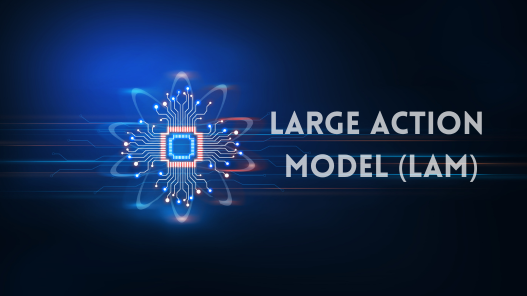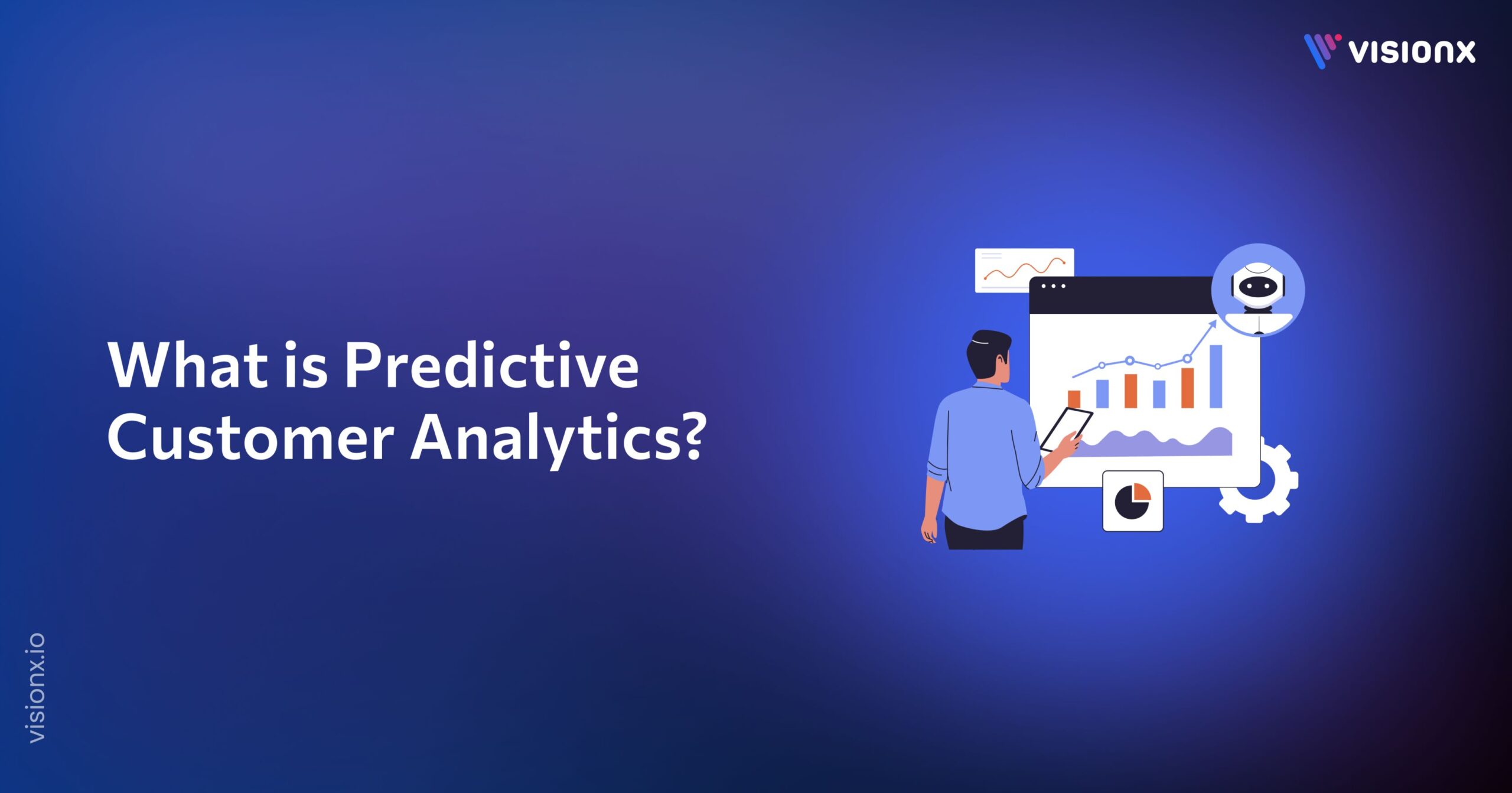The market for AI-related technologies is vast. It was estimated to be roughly 200 billion U.S. dollars in 2023 and is projected to grow much beyond this by 2030 to over 1.8 trillion U.S. dollars. Large action models will be one of the transformative technologies that will be used in this fast-growing field of artificial intelligence.
These models further enhance the ability of traditional LLMs to enable AI to execute highly complex tasks involving interaction with a wide range of applications and systems. LAMs learn to perform tasks efficiently and effectively from large datasets of user action information. This learning process includes understanding the subtleties of human intentions and translating them into actionable steps, which is the most essential part of their design.
This blog will cover the basics of LAMs, such as how they work, key features, various use cases, and where they sit within the context of the broader AI landscape. It will also illustrate how this represents a key step in changing what can be done using artificial intelligence.
What is a Large Action Model?
A large action model (LAM) is a highly advanced AI that self-executes a wide range of actions and tasks either on its own or with minimal human supervision. While large language models have activities focused on understanding, processing, and generating human language, LAMs are essentially action-centric.
They are designed to run tasks involving complex decision-making, exact manipulation of objects, navigating through physical or virtual environments, and responding dynamically in real-time situations. Such tasks require not only cognitive processing but also the ability to interact with and influence the environment; therefore, LAMs are particularly important in fields such as robotics, autonomous systems, and AI-driven automation.
It provides the capability for fine-grained, context-aware actions, hence achieving goals like efficiency, safety, and reliability in diverse applications, from industrial manufacturing to autonomous vehicles.
LAMs work with multimodal inputs, such as visual data, sensor readings, and real-time environmental feedback, further adjusting their actions to maintain optimal performance. Hence, they are applied in scenarios where human-like decision-making and physical interaction are necessary.
How Does a Large Action Model Work?
Large Action Models can incorporate several AI techniques, such as reinforcement learning, computer vision, sensor fusion, and planning algorithms. Such models are primarily developed with large datasets containing the actions’ history with corresponding environmental interactions and their outcomes. In this way, LAMs learn optimal strategies to perform tasks.
For example, a large action model fine-tuned for autonomous vehicle driving will learn to stay on roads, avoid obstacles, and make decisions in real-time based on sensor data provided.
In general, the model perceives the environment, processes the information to understand the situation, decides upon the best course of action, and then executes. Feedback loops and continuous learning mechanisms let LAMs fine-tune their performance over time.
Features of Large Action Models
The following are the features of the large action model;
- Action-Oriented Learning: LLMs are language-centric, but LAMs are trained to understand and act. This includes aspects relating to physical movements, decision processes, and task execution.
- Multi-Modal Capabilities: LAMs can usually fuse data from multiple sources, such as cameras and sensors, among other inputs, to interact and react with real-world surroundings.
- Continuous Learning: LAMs can adapt to experience and learn from it by refining their actions based on new data and experiences.
- High-Level Autonomy: LAMs are designed and created with the view of little or no human intervention; tasks are executed through independent decisions in complex environments.
Use Cases for Large Action Models
Large action models can used in the following cases;
1. Autonomous Vehicles
LAMs are used in self-driven cars to travel roads, make decisions, and act upon dynamic situations without human input.
2. Robotics
In industrial and service robotics, LAMs are applied due to their controlling capabilities over robotic arms, drones, and other devices, which enable them to accomplish tasks such as assembly, inspection, and maintenance.
3. Healthcare
LAMs can aid in surgery, care, and diagnostics by carrying out very accurate actions on dynamic data in real time.
4. Smart Manufacturing
LAMs drive automation in manufacturing processes, either by optimizing production lines, handling logistics, or controlling quality.
Role of Large Action Model in AI
Large action models are the critical step toward advancing AI from plain and simple information processing to the execution of some problematic real-world actions. These models will be at the center of autonomous systems, able to carry out human-unique tasks.
By enabling machines to perceive, adapt to, and manipulate their environment, Large action models are broadening the horizons of what AI can achieve. This ability to act instead of analyze puts LAMs at the forefront of driving industries where real-time decision-making, precision, and flexibility are paramount.
From robotics, where LAMs facilitate machines that perform tasks as intricate as assembly and surgery, to autonomous vehicles that self-navigate on a few very complex parameters about road conditions, it all sets the stage for a new era of AI-driven solutions. Their influence will not be in replacing human labor but in enhancing capabilities beyond human limitations and leading to more sophisticated, more efficient, and more reliable operations across sectors—manufacturing, logistics, health, and beyond.
Difference Between LLMs and LAM
The following are the main differences between Large Language Models (LLMs) and Large Action Models (LAMs);
| Aspects | Large Language Models (LLMS) | Large Action Models (LAMs) |
| Primary Focus | Language processing and generation | Action execution and decision-making |
| Core Functionality | Understanding, generating, and analyzing text | Performing physical or virtual actions, task automation |
| Training Data | Textual data, including books, articles, and dialogues | Data involving action sequences, environmental interactions |
| Applications | Text generation, translation, sentiment analysis, chatbots | Autonomous vehicles, robotics, smart manufacturing |
| Decision-Making | Based on language patterns and context | Based on real-time environmental feedback and goals |
| Interaction Type | Human-computer interaction through text | Interaction with physical objects or environments |
| Technology Integration | Natural language processing, deep learning | Reinforcement learning, computer vision, sensor fusion |
| Adaptability | Adapts to different languages, styles, and contexts | Adapts to dynamic environments and varying task requirements |
| Examples | GPT-4, BERT, T5 | Robotic arms, autonomous drones, self-driving cars |
Challenges and Limitations
Despite the potential, many challenges exist in Large action models, such as:
- Complexity of Data: Vast amounts of data—diverse and complex— are to be provided for the training of a large action model, considering action sequences, environmental interactions, and their outcomes.
- Ethical Concerns: The autonomous nature of LAMs could be the source of additional ethical issues, becoming more pointed in high-stakes environments like healthcare or defense.
- Technical Problems: It remains a significant technical challenge to develop LAMs that execute tasks reliably in environments that are hard to predict.
- Cost and Resources: Building and maintaining LAMs requires substantial computational resources, so the development and deployment are expensive.
The Future of Large Action Model
The future of large action models is unquestionably bright, given the continuous development of AI, growth in computing power, and enormous growth in sensor technology. Such developments give rise to increasingly sophisticated, more capable LAMs that tackle tasks of even greater complexity and work in various environments.
With the increasing sophistication of LAMs, they are destined to be a key component of autonomous systems, ranging from self-driving vehicles and other types of robots to clever automation solutions across various industries. In this way, its ability to perform precise actions, make real-time decisions, and adapt to dynamically changeable conditions will change the face of fields like manufacturing, healthcare, and logistics.
The possibility of combining LAMs with other AI developments has opened the way to creating very influential hybrid systems that can take advantage of both. These hybrid models would then enable advanced functionalities: machines that understand and generate human language and act on that understanding in real-world scenarios. For example, this hybrid model could interpret complex instructions and navigate challenging physical environments where tasks are performed with high precision.
In this manner, the LAMs and LLMs could lead to next-generation AI systems that not only make sophisticated decisions and execute actions but also have deep understanding in a contextual and linguistic sense, driving innovation and efficiency in every respect across many domains.
Summary
Large Action Models represent a quantum leap in the field of AI, steering it away from processing language and taking it towards executing actions. In the presence of LAMs, several industrial sectors related to robotics or healthcare are potentially expected to be revolutionized by the capability of machines autonomously handling intricate activities. Challenges exist, but the prospects of LAMs will be considerably high, given the potential of transforming AI and shifting the boundaries of what machines could achieve.
At VisionX, our Generative AI services will help enhance your large action models with custom AI solutions that best fit your business needs. We shall empower you to build AI models that generate insights and automate complex tasks, resulting in better decision-making and operational efficiency.
Let us help you unlock the full potential of AI to promote innovation and stay ahead in your industry.


